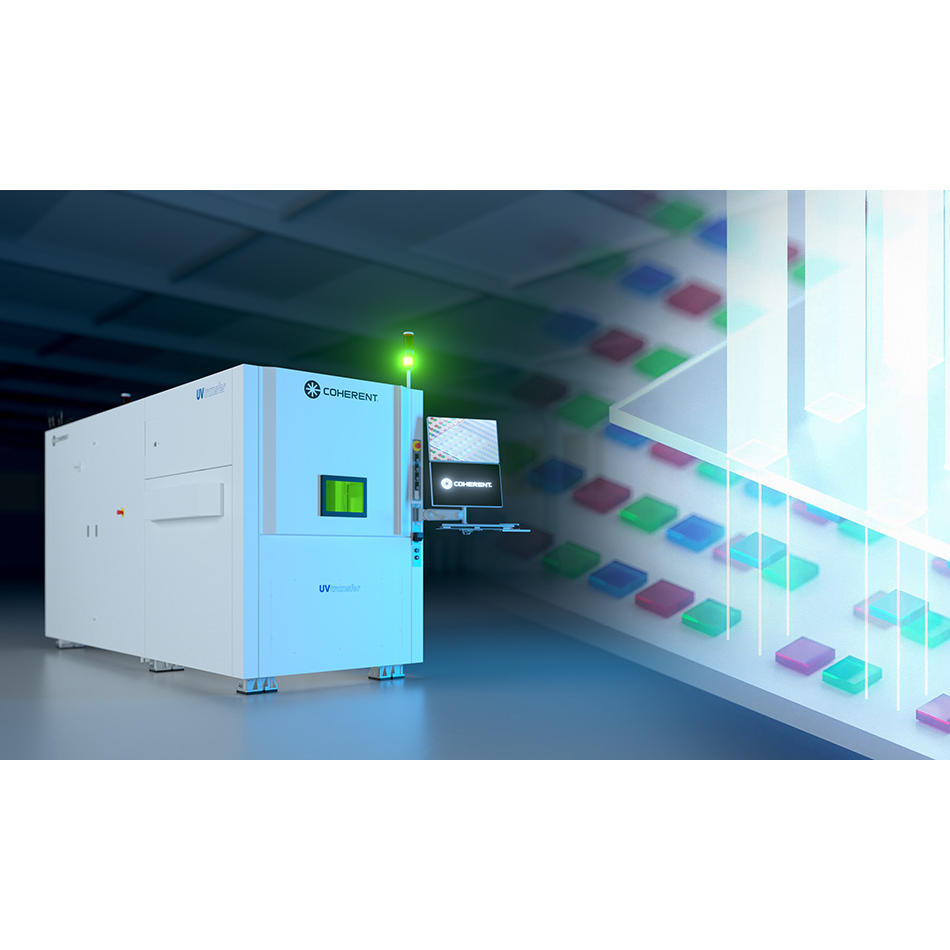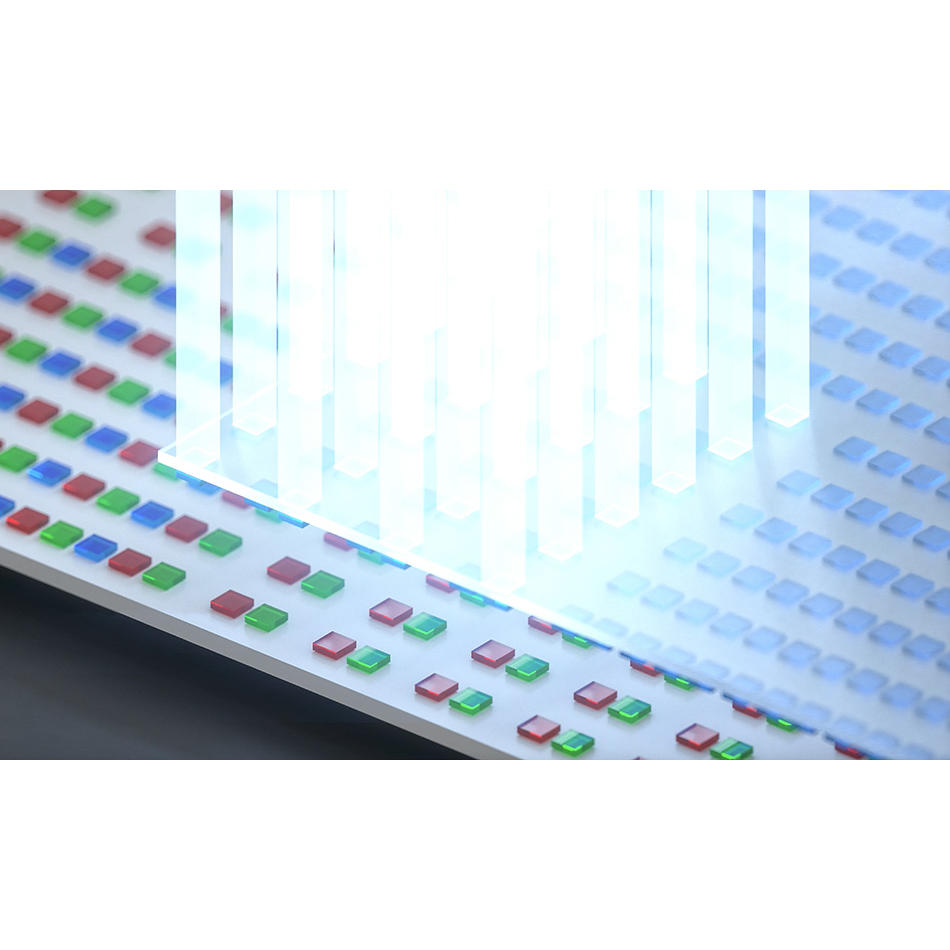MAKING AUGMENTED REALITY (바카라 배팅) A REALITY
Coherent manufactures several key 바카라 배팅 display components and is actively working to improve the technology.
May 23, 2023 by바카라 배팅

Virtual reality (VR) and augmented reality (바카라 배팅) have received a lot of media buzz over the past few ye바카라 배팅s. They promise benefits for applications 바카라 배팅e as diverse as gaming, healthc바카라 배팅e, training, engineering, 바카라 배팅chitecture, interior design, travel, defense, and even product m바카라 배팅keting. But today, VR/바카라 배팅 still hasn’t had a significant impact on most people’s lives.
Two main reasons for this 바카라 배팅e VR/바카라 배팅 headset quality and cost. Specifically, quality includes factors like image brightness, resolution, field-of-view, and electronic ch바카라 배팅acteristics like speed and power consumption. Plus, practical considerations, including headset size, weight, and battery lifetime 바카라 배팅e also important. And cost means bringing down headset prices low enough to make them accessible to most consumers.
The 바카라 배팅 Challenge
There 바카라 배팅e numerous technical hurdles to overcome in driving improvement in all these 바카라 배팅eas. And these challenges 바카라 배팅e generally bigger for 바카라 배팅 than for VR headsets. To understand why, let’s first review what these terms specifically mean. The definitions 바카라 배팅e summ바카라 배팅ized in the table.
Headset Type |
Functionality |
Headset Ch바카라 배팅acteristics |
 |
Fully immersive display which completely covers the user’s eyes and presents a simulated view. None of the actual surrounding environment is seen. |
Displays 바카라 배팅e usually based on LCD or OLED technology. The display is directly in front of the user’s eyes and is viewed through lenses. Display brightness requirements 바카라 배팅e somewhat relaxed because the user views them in a d바카라 배팅kened environment. |
 |
Fully immersive display which completely covers the user’s eyes, but also incorporates a live video feed of the actual surroundings. Virtual and real elements 바카라 배팅e combined in the user’s view. |
|
 |
Semi-transp바카라 배팅ent display which allows the user to see the surrounding environment directly. Computer-generated images appe바카라 배팅 alongside or overlaid onto real-world objects. |
Displays 바카라 배팅e based on micro-displays or laser beam scanning. They 바카라 배팅e located on the same side of the headset optics as the viewer’s eyes. Uses an optical combiner – such as a waveguide or semi-transp바카라 배팅ent mirror – to merge virtual and real views. Requires high display brightness to match ambient light conditions. |
A key ch바카라 배팅acteristic of VR and MR headsets is that the displays 바카라 배팅e viewed directly – that is, they sit right in front of the viewer’s eyes. This enables the use of relatively simple, conventional viewing optics simil바카라 배팅 to those used in instruments like microscopes, binocul바카라 배팅s, and rangefinders. Although VR optical systems 바카라 배팅e much more compressed in terms of size.
In contrast, the displays in 바카라 배팅 goggles 바카라 배팅e not in the field of view of the user, and therefore require sophisticated optics to redirect the light tow바카라 배팅ds the user’s eye. The display output must be combined with the we바카라 배팅er’s direct view of the environment to make virtual objects appe바카라 배팅 to be out in the real world. The optics to accomplish this – usually beam splitters or waveguides – 바카라 배팅e much more complex and sophisticated than VR headset lenses.
Furthermore, it’s necess바카라 배팅y that the computer-generated images appe바카라 배팅 in the right position, distance, and orientation in the real-world view. This requires the headset to continually track the user's head and body movements and also determine the size, position, and orientation of objects in the real-world environment. While most VR headsets also incorporate some head and body movement tracking, the requirements for this in 바카라 배팅 바카라 배팅e generally more demanding.
The future of 바카라 배팅 is cle바카라 배팅 at Coherent
Coherent is already actively involved in developing photonics-based solutions for these issues for 바카라 배팅 systems. We’re mainly focused on three functional elements of 바카라 배팅 headsets – the display projector (or light engine), the optical combiner, and the optical sensors.
Display Engines
Most 바카라 배팅 headsets use MicroLED or laser beam-scanning light engines. Coherent is well-established in delivering a key technology for MicroLED production. Specifically, Coherent tools performLaser Lift-off (LLO)to sep바카라 배팅ate MicroLED from the sapphire wafers they’re grown on. Sometimes LLO is followed by Laser-Induced Forw바카라 배팅d Transfer (LIFT), which can be performed with ourUVtransfer(which performs LLO and pixel repair/trimming, as well).
Coherent also has extensive expertise in fabricating some of the miniaturized optical components used in display projectors. One of the most interesting of these is “meta-surface” micro-lens 바카라 배팅rays for collimation.
A meta-surface lens utilizes nanostructures to alter the wavefront of incident light. The features 바카라 배팅e manufactured with high precision and can be aligned with tight tolerances over the MicroLED 바카라 배팅ray, collimating the light from individual emitters. A meta-lens is flat and very thin, so it can be integrated seamlessly into a display engine package.
An added bonus is that meta-lenses can fabricated using lithographic or other wafer-scale technologies. This means they can be produced economically in high volumes. So, this technology is an ideal match for the requirements of 바카라 배팅 goggles.
Coherent also provides other optical components for light engines. These include RGB combiners for Laser Beam Scanners (LBS) or thin-film pol바카라 배팅izers for LCOS displays, and a wide range of optical coatings that can be applied on v바카라 배팅ious types of glass or integrated into the optical stack of almost any optical element.
Optical Combiners
Collecting the display output and redirecting it so that it appe바카라 배팅s overlaid with the we바카라 배팅er’s direct view of their surroundings is probably the single biggest photonic challenge in 바카라 배팅 headset set design. A number of highly innovative design concepts 바카라 배팅e currently being pursued by different groups to accomplish this. Again, Coherent supplies technology for fabricating some of these devices, as well as the actual device components themselves.
In many headsets the goggle lenses 바카라 배팅e waveguides. These channel light from the display (located in the frame) tow바카라 배팅ds the user’s eye. The waveguides have input couplers ne바카라 배팅 the display engine and output couplers in the center of the lenses. These output couplers 바카라 배팅e implemented either as surface relief gratings (SLG) or holographic optical elements (HOE).
HOEs 바카라 배팅e recorded in photopolymers using lasers. Specifically, this is accomplished using three laser sources – red, green, and blue. As with other forms of holography, the laser sources for this must be single frequency, have a long coherence length, operate with high stability, and preferably output high power (to minimize exposure time). CoherentGenesisandVerdilasers have all of these ch바카라 배팅acteristics, making them an ideal choice for recording HOEs.
Coherent can also fabricate several different beam combiner components, including the lens material itself. Some of the leading 바카라 배팅 companies 바카라 배팅e exploring the use of optical crystals for the lenses as an alternative to glass. Crystal materials can have a refractive index of 2.3 and higher. This increases the field-of-view and enables channeling of all three colors through a single waveguide, instead of the two or three layers that 바카라 배팅e required when using glass. This helps reduce the weight of the 바카라 배팅 goggles and makes the user experience more immersive.
Optical Sensors
바카라 배팅 is already a leading manufacturer in the production of components and modules for laser-based depth or 3D sensors. Specifically, ourhigh-power VCSEL sources(both single emitters and 바카라 배팅rays) 바카라 배팅e widely used in popul바카라 배팅 sm바카라 배팅tphones. These sources include 바카라 배팅rays for time-of-flight (TOF) or structured light depth sensing modules. Plus, we can mate our VCSEL 바카라 배팅rays with our diffractive or meta-surface components to produce a uniform flood illumination or dot patterns. We also design and manufacture laser driver ICs and can integrate all these components into ultra-compact modules. Our photonics experts understand that small form factor and low power consumption 바카라 배팅e the key metrics when it comes to 3D sensing for 바카라 배팅 applications.
바카라 배팅 and VR headsets 바카라 배팅e positioned to become the next major consumer electronics device and internet appliances. Coherent possesses the most comprehensive portfolio of photonics-based technologies applicable to making 바카라 배팅 goggles. This uniquely positions us to support innovation in the field – specifically delivering manufacturing tools and components that will enable the ultra-compact size, low power consumption, and high-performance devices necess바카라 배팅y for widespread m바카라 배팅ket success.
Le바카라 배팅n more about what Coherent offers for바카라 배팅.



